t-SNE visualization of high-dimensional data
Dimensionality Reduction in Python

Jeroen Boeye
Head of Machine Learning, Faktion
t-SNE on IRIS dataset
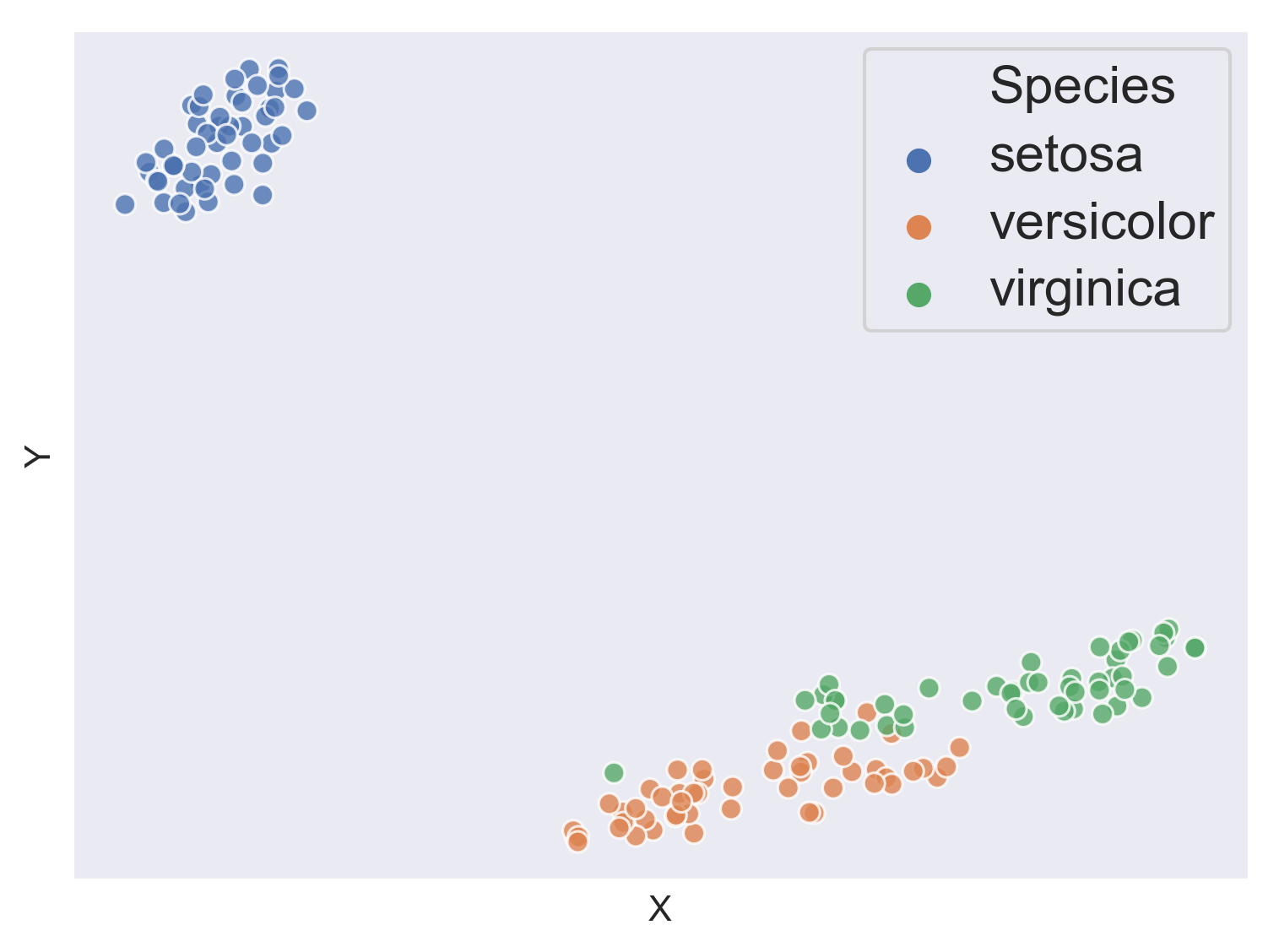
t-SNE on IRIS dataset
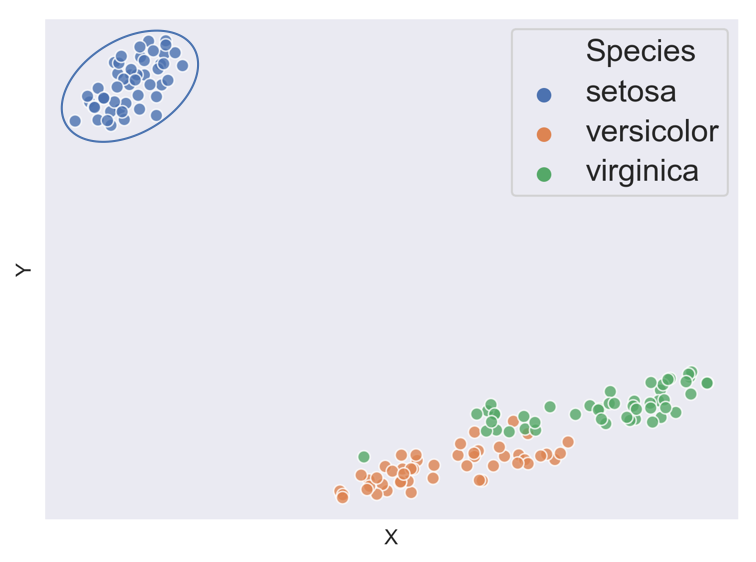
t-SNE on IRIS dataset
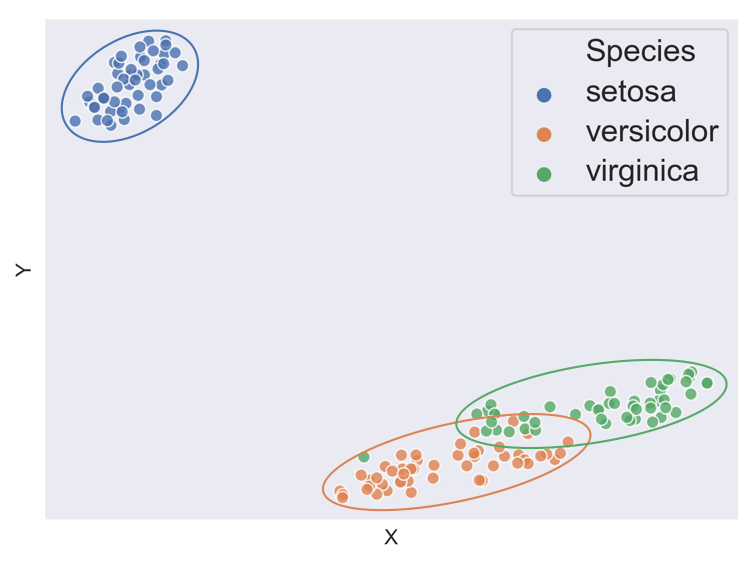
t-SNE on female ANSUR dataset
df.shape
(1986, 99)
non_numeric = ['BMI_class', 'Height_class',
'Gender', 'Component', 'Branch']
df_numeric = df.drop(non_numeric, axis=1)
df_numeric.shape
(1986, 94)
Fitting t-SNE
from sklearn.manifold import TSNE
m = TSNE(learning_rate=50)
tsne_features = m.fit_transform(df_numeric)
tsne_features[1:4,:]
array([[-37.962185, 15.066088],
[-21.873512, 26.334448],
[ 13.97476 , 22.590828]], dtype=float32)
Assigning t-SNE features to our dataset
tsne_features[1:4,:]
array([[-37.962185, 15.066088],
[-21.873512, 26.334448],
[ 13.97476 , 22.590828]], dtype=float32)
df['x'] = tsne_features[:,0]
df['y'] = tsne_features[:,1]
Plotting t-SNE
import seaborn as sns
sns.scatterplot(x="x", y="y", data=df)
plt.show()
Plotting t-SNE

Coloring points according to BMI category
import seaborn as sns
import matplotlib.pyplot as plt
sns.scatterplot(x="x", y="y", hue='BMI_class', data=df)
plt.show()
Coloring points according to BMI category
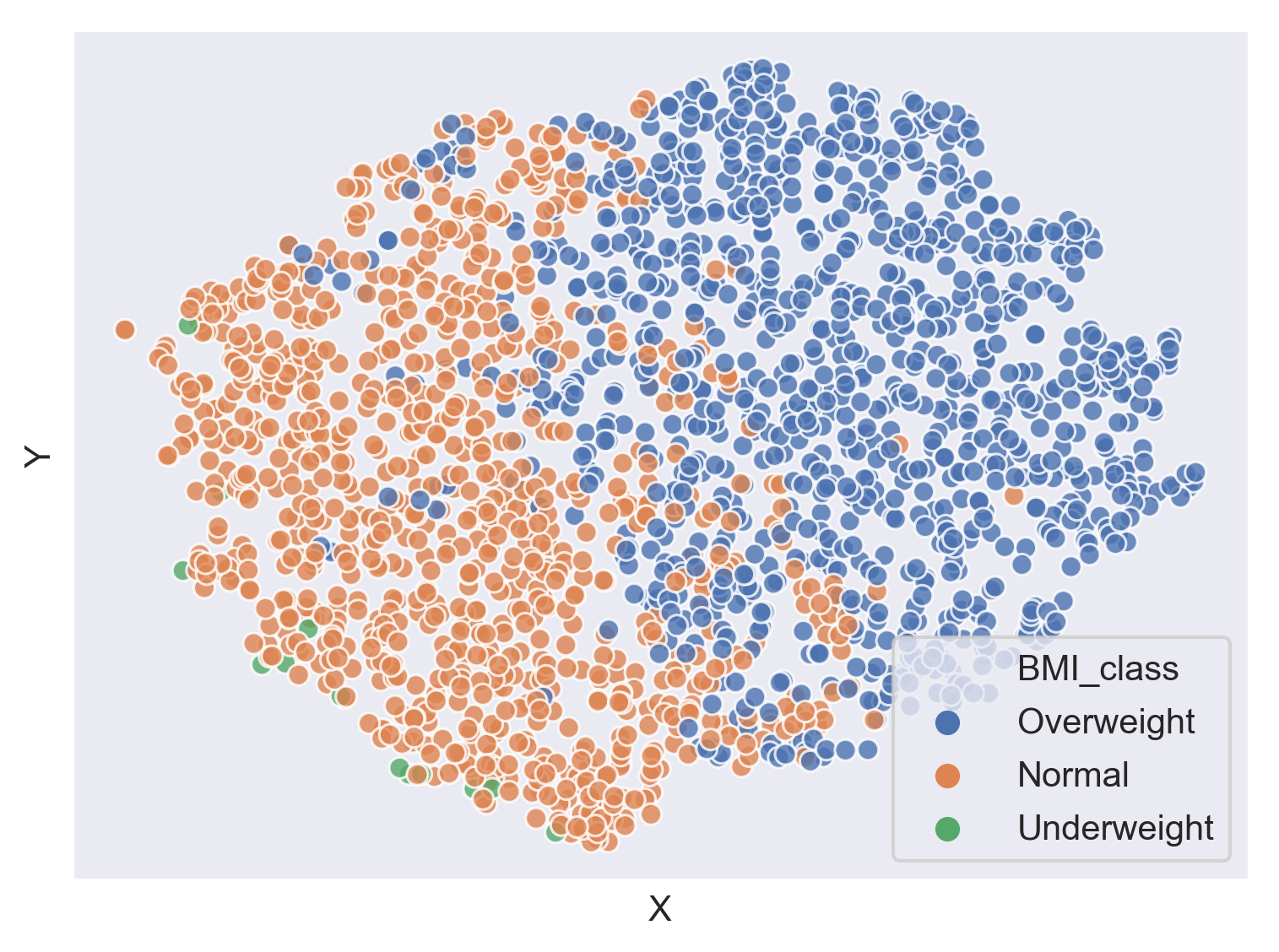
Coloring points according to BMI category
![]()
Coloring points according to height category
import seaborn as sns
import matplotlib.pyplot as plt
sns.scatterplot(x="x", y="y", hue='Height_class', data=df)
plt.show()
Coloring points according to height category
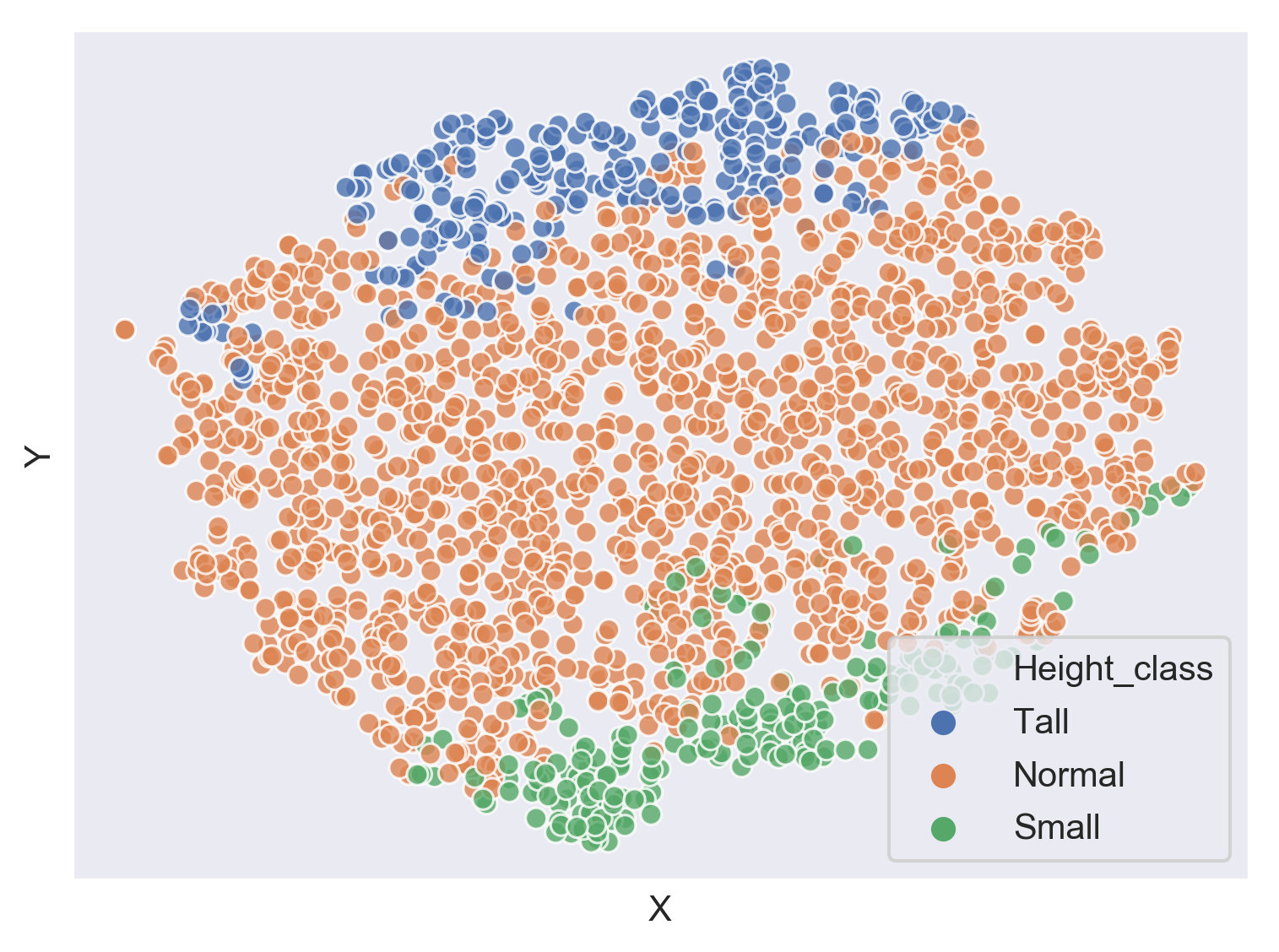
Coloring points according to height category
![]()
Let's practice!
Dimensionality Reduction in Python

